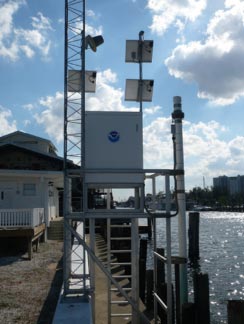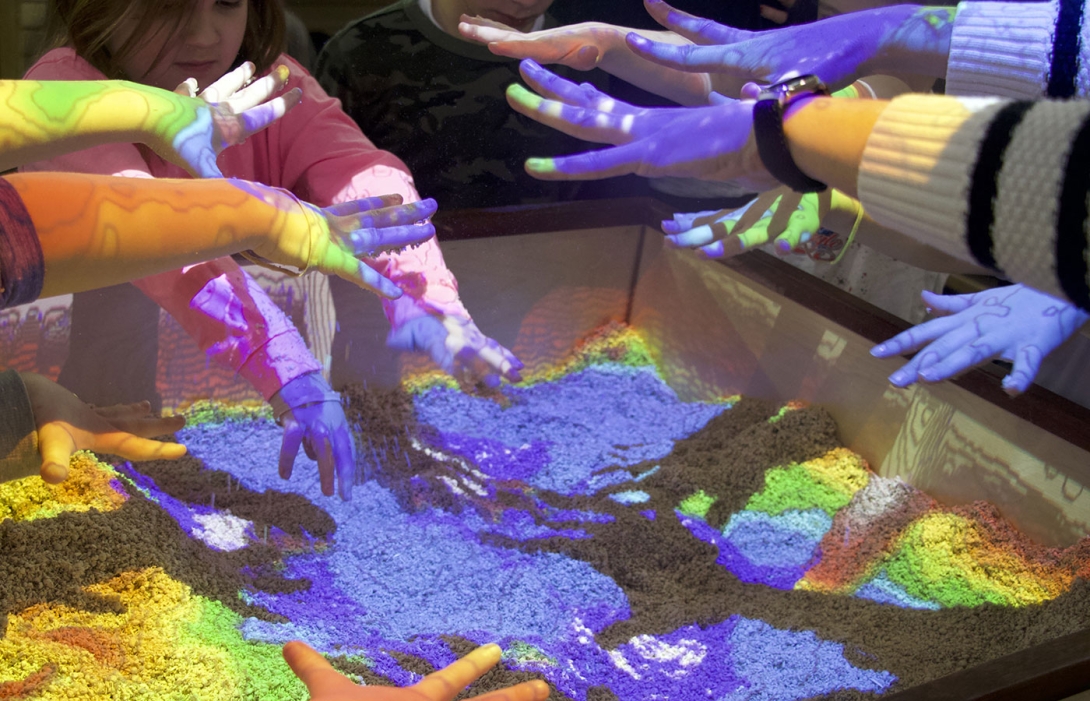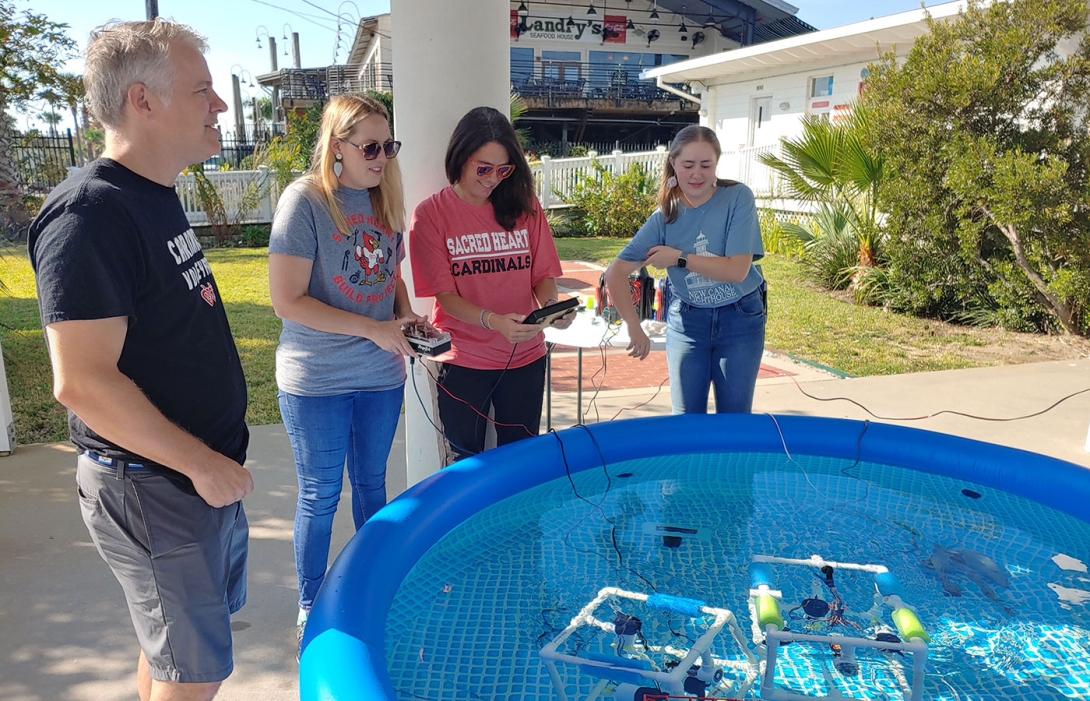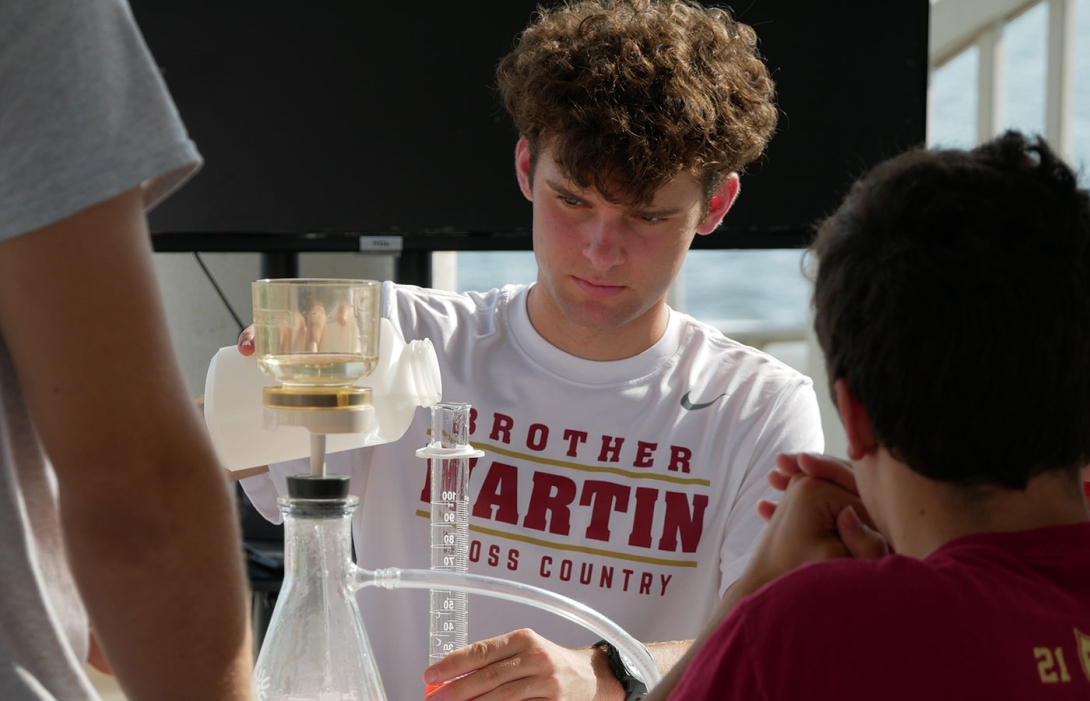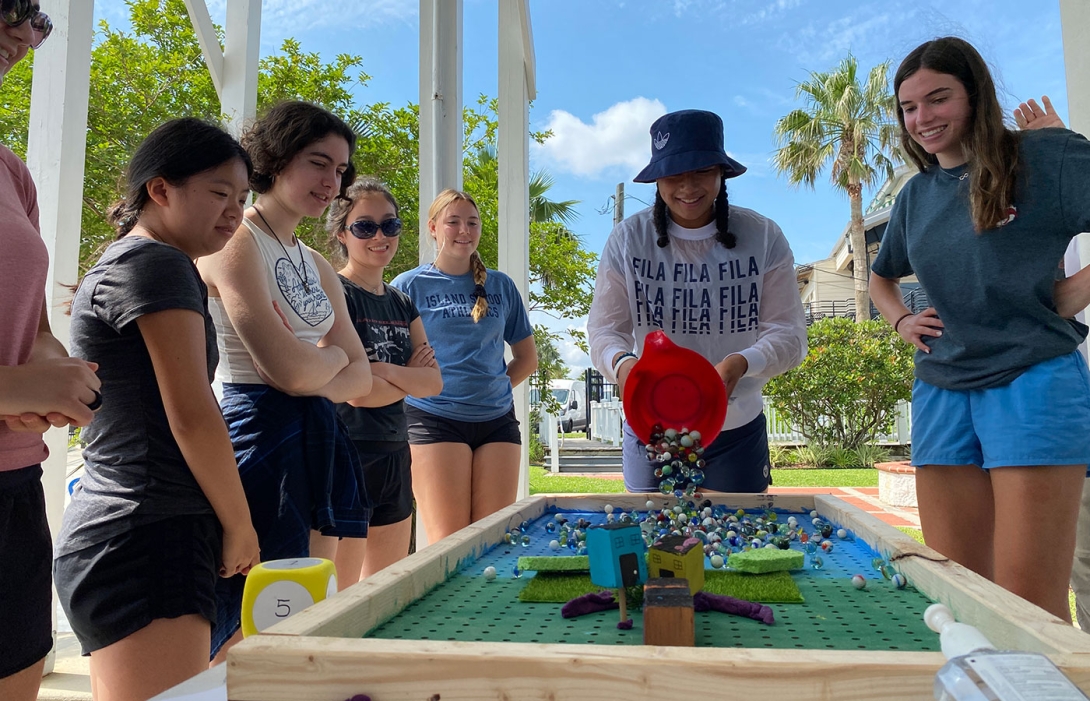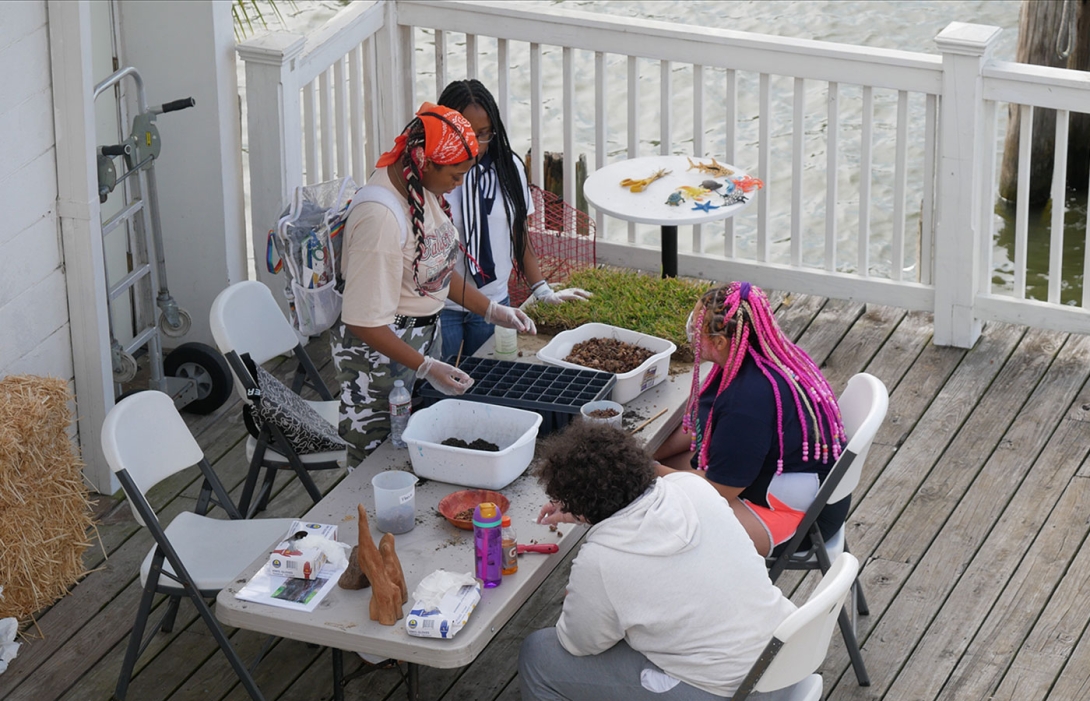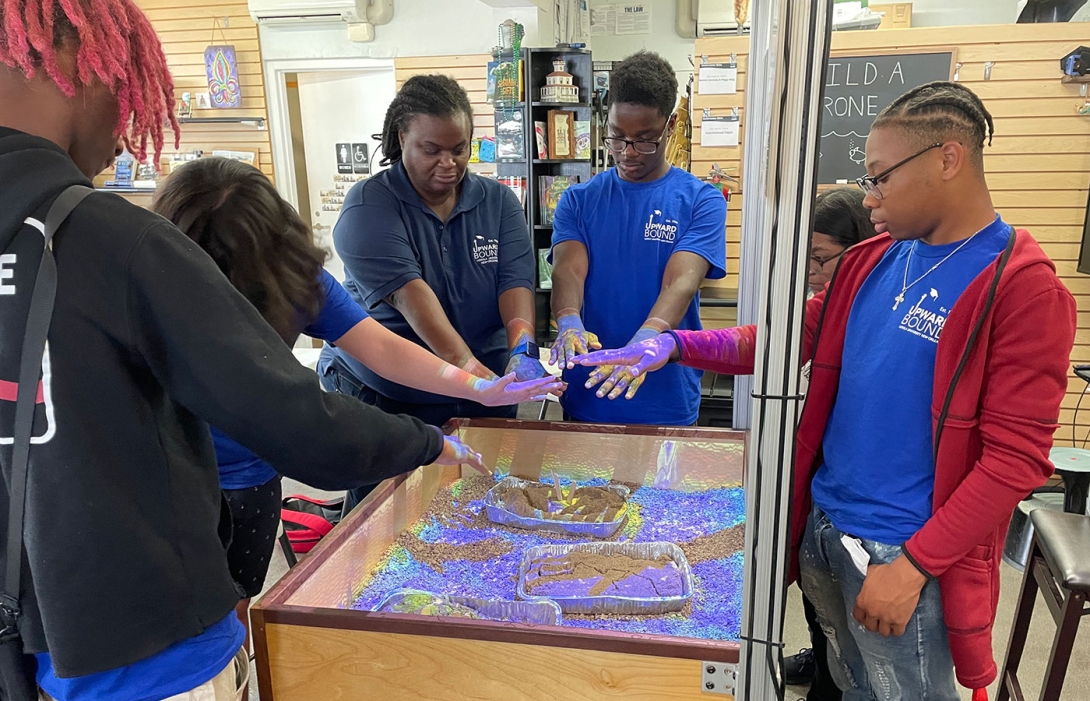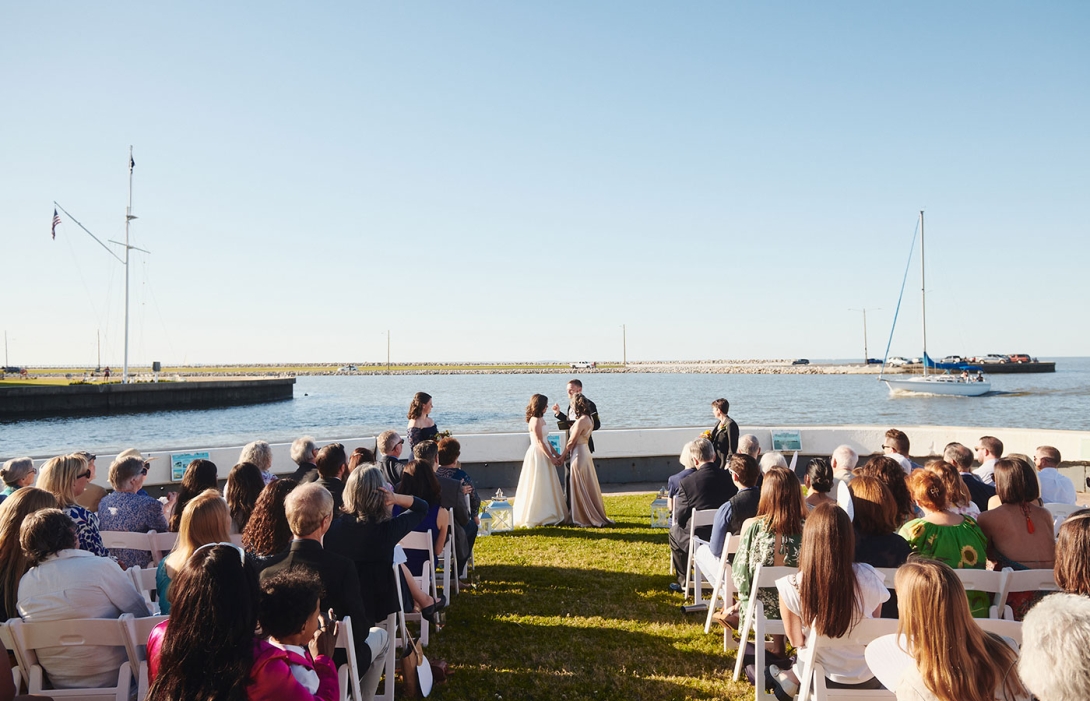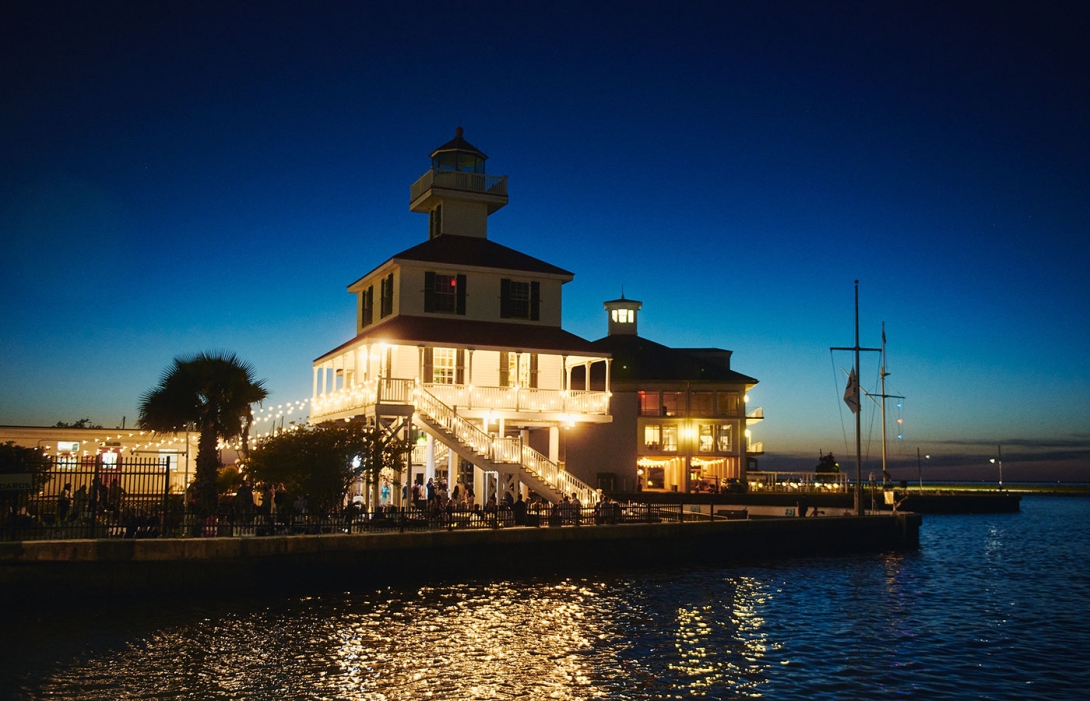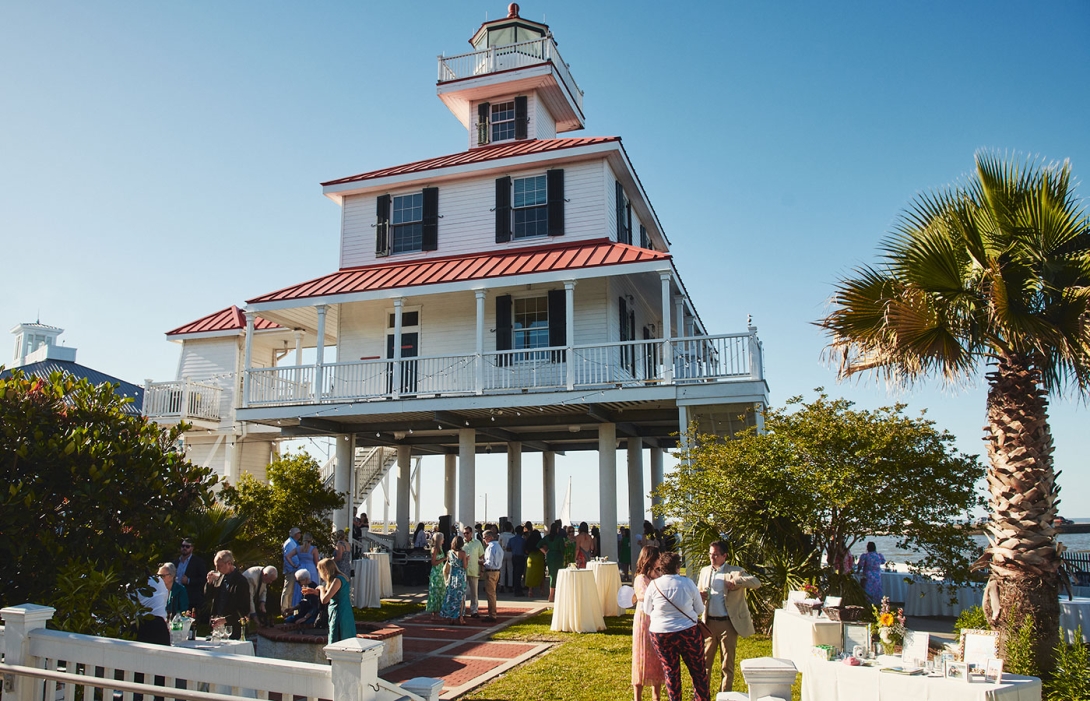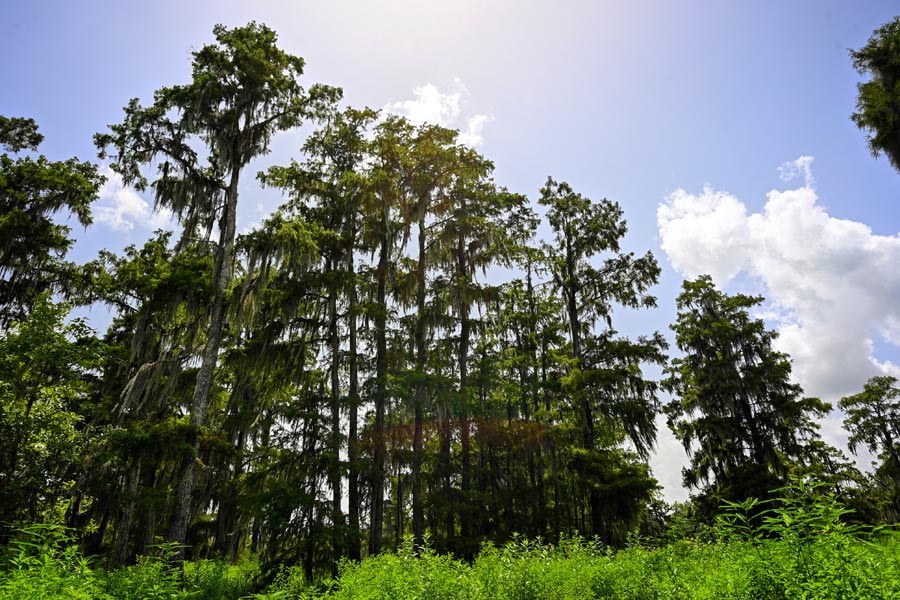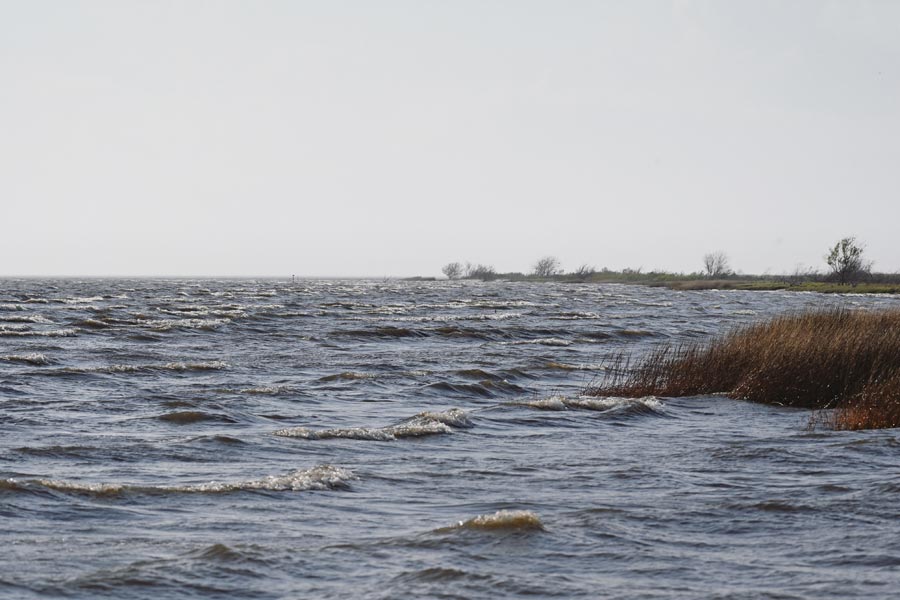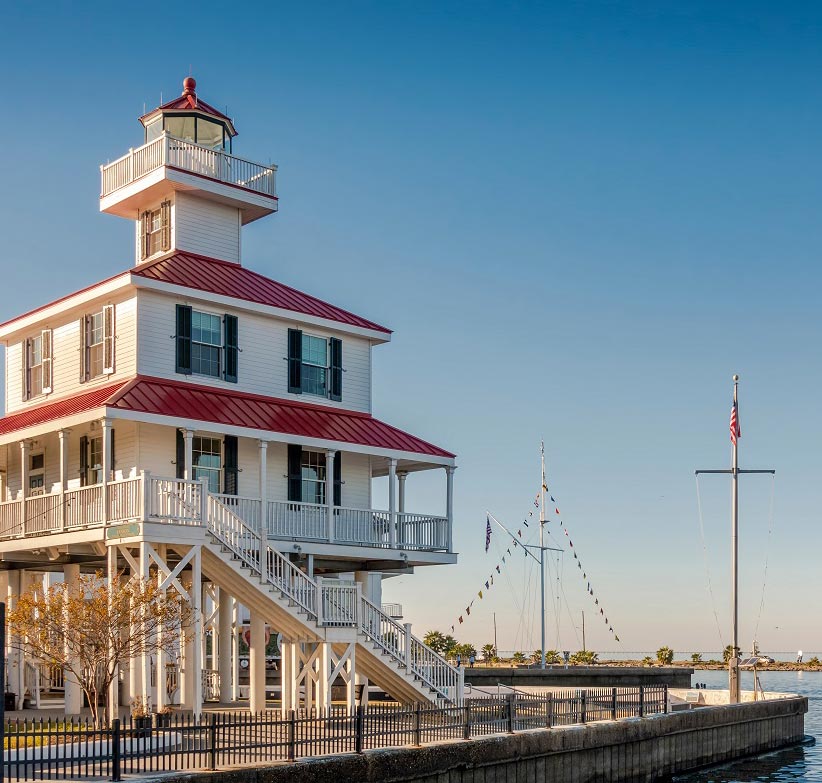
Visit. Learn. Engage.
The Lighthouse
The Lighthouse is where science for our coast begins for our community. On the shore of Lake Pontchartrain, our Lighthouse serves as a science and history museum, and our public outreach and education center.
Experiences
Walk-in visitors to our Lighthouse can enjoy a curated selection of fun, educational, and hands-on activities.
- Interactive Sandbox: Build 3D models of land & water bodies, then make it "rain" to see where the stormwater goes! Learn about how coastal restoration can protect New Orleans.
- Help Grow Louisiana: Help us start native flowers and trees from seed, to be planted in our coastal marshes. You can even take a native seed pot and help us grow more Louisiana at home!
- Solve Water Mysteries: Bring in a water sample from your favorite spots in the Pontchartrain Basin. Solve the mystery of what’s in our water!
- Lighthouse Tours: Learn more about the lighthouse, its history, and how PC is working to restore Louisiana’s coast. Docent-guided tours of this historic site are available as well as audio and printed tour guides
Educational Programs & Field Trips
We also offer 2-3 hour educational programming at the Lighthouse for groups of all sizes and ages. Contact us to learn more! Choose from a range of topics including:
Climate Science Climate Impacts on the Coast
Carbon Footprint Challenge
Weather vs. Climate
Climate Justice
Coastal Land Loss & RestorationDelta Builders
Living Shorelines
Marsh Madness
Native Plant Power
Multiple Lines of Defense
Water QualityWater Quality Monitoring
ROV Adventures
Watersheds
Macroinvertebrate Mayhem
Public Lab
Each course includes hands-on activities, some not available to walk-in visitors!
Climate Science
Coastal Land Loss & Restoration
Water Quality
Each course includes hands-on activities, some not available to walk-in visitors!
Become an Eco-Guide
Looking to make a difference in your community and gain real-world environmental science experience? Become an Eco-Guide. Based at the New Canal Lighthouse, Eco-Guides help lead hands-on activities for school groups and the public, sharing knowledge about local ecosystems, water quality, and coastal restoration.
Event Rentals
Elevate your next event to shine by hosting it at Pontchartrain Conservancy's Lighthouse.
Set against the picturesque backdrop of Lake Pontchartrain, this historic and charming venue offers a unique and unforgettable setting for weddings, corporate gatherings, celebrations, and more.
Our dedicated team is committed to ensuring that your special occasion at the New Canal Lighthouse is nothing short of exceptional.
Set against the picturesque backdrop of Lake Pontchartrain, this historic and charming venue offers a unique and unforgettable setting for weddings, corporate gatherings, celebrations, and more.
Our dedicated team is committed to ensuring that your special occasion at the New Canal Lighthouse is nothing short of exceptional.
Visit
The Lighthouse is a historic public space featuring a museum and education center. Dive deeper into the building’s history and our basin’s story. Discover the work Pontchartrain Conservancy does to bring science to our communities and to sustain the Pontchartrain Basin. Explore the many hands-on, educational activities we have available for all ages!
Hours
Tuesday - Saturday
10 a.m. - 4 p.m.
Closed Sunday and Monday
10 a.m. - 4 p.m.
Closed Sunday and Monday
Tickets
$10.00 General Admission
$7.50 Seniors, Students, Military
FREE Children under 6 years old
$7.50 Seniors, Students, Military
FREE Children under 6 years old
Location
8001 Lakeshore Drive
New Orleans, LA 70124
New Orleans, LA 70124
Accessibility
All areas and facilities on the Lighthouse grounds are accessible. Print copies of guided tours are available in Spanish, German and large print.
Our Work
Pontchartrain Conservancy’s programmatic areas work throughout the 16 parishes of the Pontchartrain Basin to advance our mission.Get Involved
Discover the many ways you can contribute to save Southeast Louisiana. Take part in a tree planting, aid in gardening and instruction at our Lighthouse, or giveback in other ways. We need you today!
Support Our Work
By supporting Pontchartrain Conservancy, you have the opportunity to help save the Louisiana you know and love. Your support enables us to build a sustainable, prosperous, and resilient region together.
Did you know there is a NOAA station at the Lighthouse? Check current marine conditions here:
